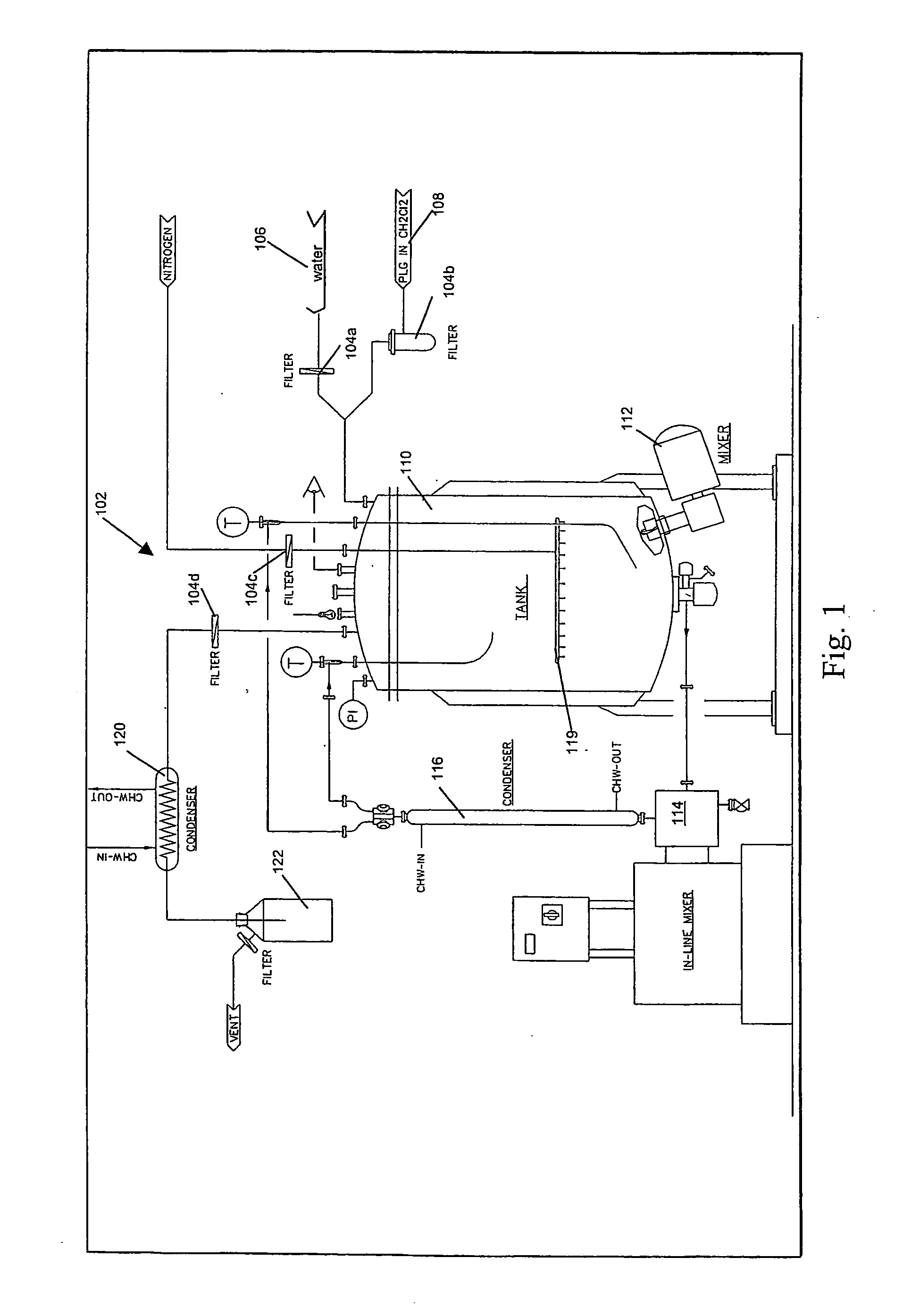Microparticles with adsorbed polypeptide-containing molecules
a polypeptide-containing, biodegradable technology, applied in the direction of antibacterial agents, immunological disorders, antibody medical ingredients, etc., can solve the problem of additional regulatory scrutiny
- Summary
- Abstract
- Description
- Claims
- Application Information
AI Technical Summary
Benefits of technology
Problems solved by technology
Method used
Image
Examples
example 1
Preparation of PLG Particles with No Surfactant
[0124] 2.5 ml PBS is homogenized with 10 ml 6% RG503 (a PLG Polymer having a 50:50 lactide / glycolide molar ratio and a molecular weight of 34,000 Daltons, available from Boehringer Ingelheim) in dimethyl chloride with a small probe of the IKA homogenizer (Germany) at 23,000 rpm for 2 minutes. This primary o / w emulsion is added to 50 ml of deionized water, followed by homogenization with a 10 mm probe of the Omni benchtop homogenizer (LabTek Inc, US) at 15,000 rpm for 30 minutes in an ice bath. The container is sealed using Teflon tape with the homogenizer inserted into the liquid to prevent solvent evaporation during homogenization. The Teflon tape is removed, and this secondary w / o / w emulsion is left stirring overnight to allow for solvent evaporation. The next day the particle size is measured using a Malvern Master Sizer. The size range is typically 0.5-1 micron.
example 2
Preparation of PLG Particles with 0.05% and 0.5% wt:wt DSS to PLG
[0125] 2.5 ml PBS is homogenized with 10 ml 6% RG503 (a PLG Polymer having a 50:50 lactide / glycolide molar ratio and a molecular weight of 34,000 Daltons, available from Boehringer Ingelheim) in dimethyl chloride with a small probe of the IKA homogenizer (Germany) at 23,000 rpm for 2 minutes. This primary o / w emulsion is added to 50ml of deionized water, containing either 6 ug / ml or 60 ug / ml DSS for 0.05% and 0.5% respectively. This is followed by homogenization with a 10 mm probe of the Omni benchtop homogenizer (LabTek Inc, US) at 15,000 rpm for 30 minutes in an ice bath. The container is sealed using Teflon tape with the homogenizer inserted into the liquid to prevent solvent evaporation during homogenization. The Teflon tape is removed, and this secondary w / o / w emulsion is left stirring overnight to allow for solvent evaporation. The next day the particle size is measured using a Malvern Master Sizer. The size ran...
example 3
Preparation of PLG Particles (Conventional Formulation)
[0126] 2.5 ml PBS is homogenized with 10 ml 6% RG503 (a PLG Polymer having a 50:50 lactide / glycolide molar ratio and a molecular weight of 34,000 Daltons, available from Boehringer Ingelheim) in dimethyl chloride with a small probe of the IKA homogenizer (Germany) at 23,000 rpm for 2 minutes. This primary o / w emulsion is added to 50 ml of deionized water, containing 1% wt:vol DSS. This is followed by homogenization with a 10 mm probe of the Omni benchtop homogenizer (LabTek Inc, US) at 10,000 rpm for 3 minutes at room temperature. This secondary w / o / w emulsion is left stirring overnight to allow for solvent evaporation. The next day the particle size is measured using a Malvern Master Sizer. The size range is typically 0.5-1 micron.
PUM
| Property | Measurement | Unit |
|---|---|---|
| molecular weight | aaaaa | aaaaa |
| molecular weight | aaaaa | aaaaa |
| weight-to-weight ratio | aaaaa | aaaaa |
Abstract
Description
Claims
Application Information
 Login to View More
Login to View More - R&D
- Intellectual Property
- Life Sciences
- Materials
- Tech Scout
- Unparalleled Data Quality
- Higher Quality Content
- 60% Fewer Hallucinations
Browse by: Latest US Patents, China's latest patents, Technical Efficacy Thesaurus, Application Domain, Technology Topic, Popular Technical Reports.
© 2025 PatSnap. All rights reserved.Legal|Privacy policy|Modern Slavery Act Transparency Statement|Sitemap|About US| Contact US: help@patsnap.com

